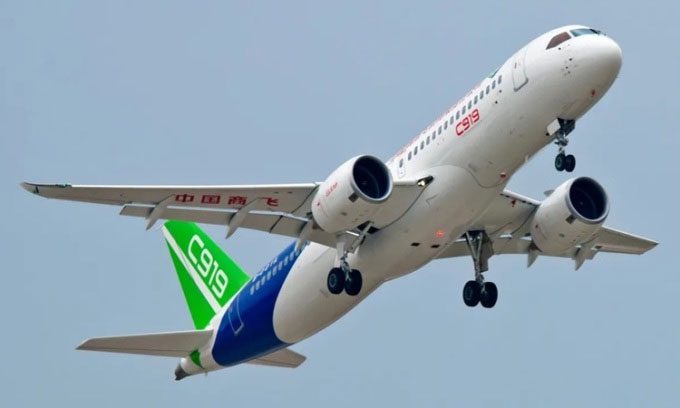The 18 wind tunnel complex scattered across the country has enabled China to produce its first domestically manufactured large passenger aircraft, the C919.
Since 2007, China has invested significant resources in building 18 wind tunnels nationwide, providing crucial testing environments for scientists and engineers as they strive to develop the first large domestically produced commercial jet. After more than 16 years, an article published in the journal Acta Aerodynamica Sinica by engineer Wu Junqiang at the Chinese Aerodynamics Research and Development Center in Mianyang, Sichuan, details the scale of the winds tunnel complex, as reported by Interesting Engineering on January 18.

China’s C919 aircraft. (Photo: Sky_Blue/iStock).
According to Wu, the complex is equivalent in total number of wind tunnels to those in the US and Europe (11 in the US and 7 in Europe). Notably, the largest wind tunnels in the West, used for developing new models for Boeing and Airbus, are no larger than 5 meters. In contrast, China has 4 wind tunnels that are 8 meters or larger. These facilities allow scientists and engineers to test and overcome various challenges in aircraft development, including aerodynamic shapes, extreme operational conditions, ice protection systems, vibration reduction, noise control, and flight control.
This large-scale ground research infrastructure is specifically utilized for developing China’s recently delivered commercial aircraft, the C919. This aircraft features more spacious interiors and a more aerodynamic shape with lower drag compared to competitors like the Boeing 737 and Airbus A320. Additionally, during cruise flight, the cabin noise of the 737 can reach up to 80 decibels, whereas the C919 generates only 60 decibels. The aircraft model is also cost-efficient, with operational costs, including fuel consumption, being 10% lower than its Western counterparts.
The C919 has only been in commercial operation for a few months, and its long-term operating costs and reliability still need to be assessed. Furthermore, the aircraft’s current engines depend on Western suppliers. However, this aircraft has been designed entirely using wind tunnels in China, showcasing a significant technological breakthrough.
When the Chinese government relaunched its civil aviation program in 2007, the country had only one wind tunnel with a width of 2.4 meters. While the Chinese military has access to various tunnels, the characteristics of civilian aircraft differ significantly from those of fighter jets. Wind tunnel builders in China have made breakthroughs in a series of technological challenges over the past two decades, establishing a large aircraft research and development system with complete intellectual property rights.


















































